Bermuda Grass
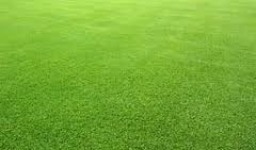
Bermuda grass is the most common warm season grass used for homes, athletic fields, golf courses, and commercial applications in Arkansas.
Bermuda grass is a sun loving, warm season lawn grass. Bermuda can be easily planted from seed and provides an excellent turfgrass lawn in Southern areas. Bermuda turf requires a moderate amount maintenance and mowing.
BERMUDA GRASS is considered the "South's Grass", a favorite for it's texture, color and hardiness.
This perennial grass grows in tropical, sub-tropical and transition zones. Found extensively on lawns, golf courses, sports fields, road-sides, reclamation areas, and parks. Newer, more "cold tolerant" varieties extend Bermudas planting area further North allowing a choice of a more drought resistant species in the transition zone.
Bermuda grass is a sun loving, warm season lawn grass. Bermuda can be easily planted from seed and provides an excellent turfgrass lawn in Southern areas. Bermuda turf requires a moderate amount maintenance and mowing.
BERMUDA GRASS is considered the "South's Grass", a favorite for it's texture, color and hardiness.
This perennial grass grows in tropical, sub-tropical and transition zones. Found extensively on lawns, golf courses, sports fields, road-sides, reclamation areas, and parks. Newer, more "cold tolerant" varieties extend Bermudas planting area further North allowing a choice of a more drought resistant species in the transition zone.
Centipede Grass

This creeping, medium-width grass is well adapted to the sandy, acidic soils with low fertility and has relatively low maintenance requirements. It spreads by stolons which will knit together over time forming a dense turf. It has a coarse texture with short upright stems that grow to about 3-5 inches. It requires less mowing, survives in mild cold temperatures as long as there aren’t several hard freezes. Since it doesn’t go into a true dormancy and with light freezes will turn brown but as soon as the temperature rises it will recover and re-greens.
Being a low growing grass it is a favorite of busy lawn growers with a much longer period of days being added to the mowing cycle. Low fertilization requirements can be met by a single yearly application. Too much nitrogen can produce growth but cause problems with insects or disease. Centipede is rather drought tolerant and when healthy is aggressive enough to choke out weeds and other grasses. Although the roots are not as deep as Bahia or Bermuda, its close to the ground growth allows for better conservation of water and helps fight drought. It grows well in full sun to moderate shade. It needs to have at least 6 hours of sun per day to survive.
Being a low growing grass it is a favorite of busy lawn growers with a much longer period of days being added to the mowing cycle. Low fertilization requirements can be met by a single yearly application. Too much nitrogen can produce growth but cause problems with insects or disease. Centipede is rather drought tolerant and when healthy is aggressive enough to choke out weeds and other grasses. Although the roots are not as deep as Bahia or Bermuda, its close to the ground growth allows for better conservation of water and helps fight drought. It grows well in full sun to moderate shade. It needs to have at least 6 hours of sun per day to survive.
Weeping Lovegrass

Weeping Lovegrass is the favorite choice for slopes, levies, stream banks, or any area where soil low maintinance soil stabelization is a priority. This warm season, perennial bunchgrass that looks like an ornamental fountain grass growing 12"-24" tall at maturity. The long flowing leaves suggest is name "weeping". Seed heads are erect or drooping and produce very small and numerous seeds (1.5 million per lb.). Weeping Lovegrass is established easily by hydroseeding and grows in some of the worst conditions we see.
It grows on almost any well-drained soil, but prefers the sandy loams; also will grow on low fertility soils. Lovegrass responds well to fertilization. Used for erosion control and stabilizing steep banks.
It grows on almost any well-drained soil, but prefers the sandy loams; also will grow on low fertility soils. Lovegrass responds well to fertilization. Used for erosion control and stabilizing steep banks.
Turf-Type Tall Fescue
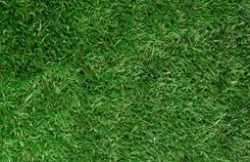
Turf-type tall fescues are becoming a popular turfgrass for homes and industrial sites with limited or filtered sunlight. Turf-type fescues are not as thick as traditional tall fescue commonly used as pasture grasses. The fescue is a bunch type grass, as opposed to the rhizomatic growth of bermuda grass. They are considered a cool season grass, remaining green for the fall and winter months.
Tall fescues must remain dense to keep blades thin. Proper mowing and fertilizing practices help keep blades thin; proper maintinance will include overseeding every year will to maintain a dense turf.
September, October and November are generally the best times to plant turf-type tall fescues. Earlier seeding tends to undergo excessive heat stress and seedling diseases, and later planting may not be fully established prior to hard winter freezes. Seeding in early spring is generally not recommended unless an automatic sprinkler system is installed because the plant does not have time to develop the deep root system needed to survive the hot summer.
Tall fescues must remain dense to keep blades thin. Proper mowing and fertilizing practices help keep blades thin; proper maintinance will include overseeding every year will to maintain a dense turf.
September, October and November are generally the best times to plant turf-type tall fescues. Earlier seeding tends to undergo excessive heat stress and seedling diseases, and later planting may not be fully established prior to hard winter freezes. Seeding in early spring is generally not recommended unless an automatic sprinkler system is installed because the plant does not have time to develop the deep root system needed to survive the hot summer.
Rye Grass
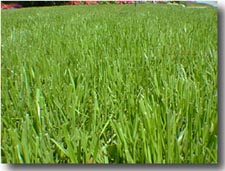
Both Perennial and Annual Rye grass can provide a winter green lawn overseeded on warm season grasses. On a newly seeded lawn it can act as an erosion barrier while the permanent lawn develops plus giving any area an almost "instant" green coverage. This green coverage is the chief purpose for using annual ryegrass. Bright green, fast growing, and prolific; the ryegrasses do much for lawns by adding contrasting color to early spring flowers, trees and shrubs.
ANNUAL RYEGRASS is a cool season grass generally used as a temporary planting for overseeding warm or cool season grasses. Its uses are many, including temporary pastures, green manure's, temporary coverage for erosion control, short term use on reclamation sites, parks, new lawns, and along highway shoulders. Annual ryegrass may be seeded with other grass mixtures, legumes, clovers and small grains. Fast germinating, quick growing and requires low to medium fertilization.As a fill-in grass on slower growing permanent lawns annual ryegrass is exceptionally adept. Ideally suited for short term seasonal use in areas reaching below the transition zone, annual ryegrass is a great fill-in to create green grass on new areas. In warmer regions, ryegrass lawns may require watering, fertilization and mowing quite frequently.
PERENNIAL RYEGRASS LAWNS are one of the best lower maintenance lawns of the cool season grasses. This is one of the toughest and most wearable turf covers that can be grown. Ryegrass is noted for quick germination, shiny green color, fine texture (newer turf type varieties) and dense forming sod. High disease and insect resistance helps to make perennial ryegrass one of the leading choices for lawn and athletic covers in north America. Used as permanent turfs and in overseeding warm season grasses while they are in winter dormancy. Perennial is also mixed with other cool season grasses to provide more density to the dominate grass in the mixture. Perennial ryegrass is often added to Kentucky bluegrass to add strength and give bluegrass time to repair while the perennial is in full growth. These two grass species can be mown at the same height and retain a sod density for which both are well known.
ANNUAL RYEGRASS is a cool season grass generally used as a temporary planting for overseeding warm or cool season grasses. Its uses are many, including temporary pastures, green manure's, temporary coverage for erosion control, short term use on reclamation sites, parks, new lawns, and along highway shoulders. Annual ryegrass may be seeded with other grass mixtures, legumes, clovers and small grains. Fast germinating, quick growing and requires low to medium fertilization.As a fill-in grass on slower growing permanent lawns annual ryegrass is exceptionally adept. Ideally suited for short term seasonal use in areas reaching below the transition zone, annual ryegrass is a great fill-in to create green grass on new areas. In warmer regions, ryegrass lawns may require watering, fertilization and mowing quite frequently.
PERENNIAL RYEGRASS LAWNS are one of the best lower maintenance lawns of the cool season grasses. This is one of the toughest and most wearable turf covers that can be grown. Ryegrass is noted for quick germination, shiny green color, fine texture (newer turf type varieties) and dense forming sod. High disease and insect resistance helps to make perennial ryegrass one of the leading choices for lawn and athletic covers in north America. Used as permanent turfs and in overseeding warm season grasses while they are in winter dormancy. Perennial is also mixed with other cool season grasses to provide more density to the dominate grass in the mixture. Perennial ryegrass is often added to Kentucky bluegrass to add strength and give bluegrass time to repair while the perennial is in full growth. These two grass species can be mown at the same height and retain a sod density for which both are well known.
Wildflowers
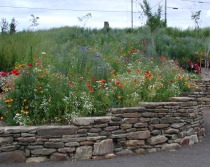
Wildflowers have become increasingly popular for areas that will not be maintained and where some color is desired. Several varieties are normally mixed together to allow for a variety of colors and styles.
From seed, most perennials do not bloom until they have lived through at least one growing season and a winter. During their first year, they make small top growth while developing deep root systems. This allows the plant to survive its first winter, and then develop into a full size blooming plant its second season. Most perennials bloom for approximately two weeks each year. If they are winter hardy in their growing region, most are quite permanent, and can live and expand for decades. A few are “short-lived” in some areas, and may return only 3 to 5 years. Overseeding may be necessary if the flower display becomes weak in years to come.
The wildfowers pictured above was a slope we shot in Hot Springs, Arkansas. It was well prepared and had an in-ground sprinkler system. As always, great preparation and care produces great results.
From seed, most perennials do not bloom until they have lived through at least one growing season and a winter. During their first year, they make small top growth while developing deep root systems. This allows the plant to survive its first winter, and then develop into a full size blooming plant its second season. Most perennials bloom for approximately two weeks each year. If they are winter hardy in their growing region, most are quite permanent, and can live and expand for decades. A few are “short-lived” in some areas, and may return only 3 to 5 years. Overseeding may be necessary if the flower display becomes weak in years to come.
The wildfowers pictured above was a slope we shot in Hot Springs, Arkansas. It was well prepared and had an in-ground sprinkler system. As always, great preparation and care produces great results.
Native Grasses
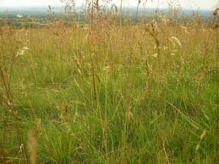
Native grasses are those species that were common in the mid-west and plains states of North America prior to our current civilization. Many of these species are now being called for in state and national parks and forests, wet land mitigation sites, mine reclamation sites and other eco-friendly development areas. Some of the more common native grasses include Switchgrass, Little Bluestem, Indian Grass, Side Oats and Grama Grass. These grasses are normally blended together for a more natural looking stand. When mature they require no maintinance and grow 3'-4' tall.
Web Hosting by FatCow